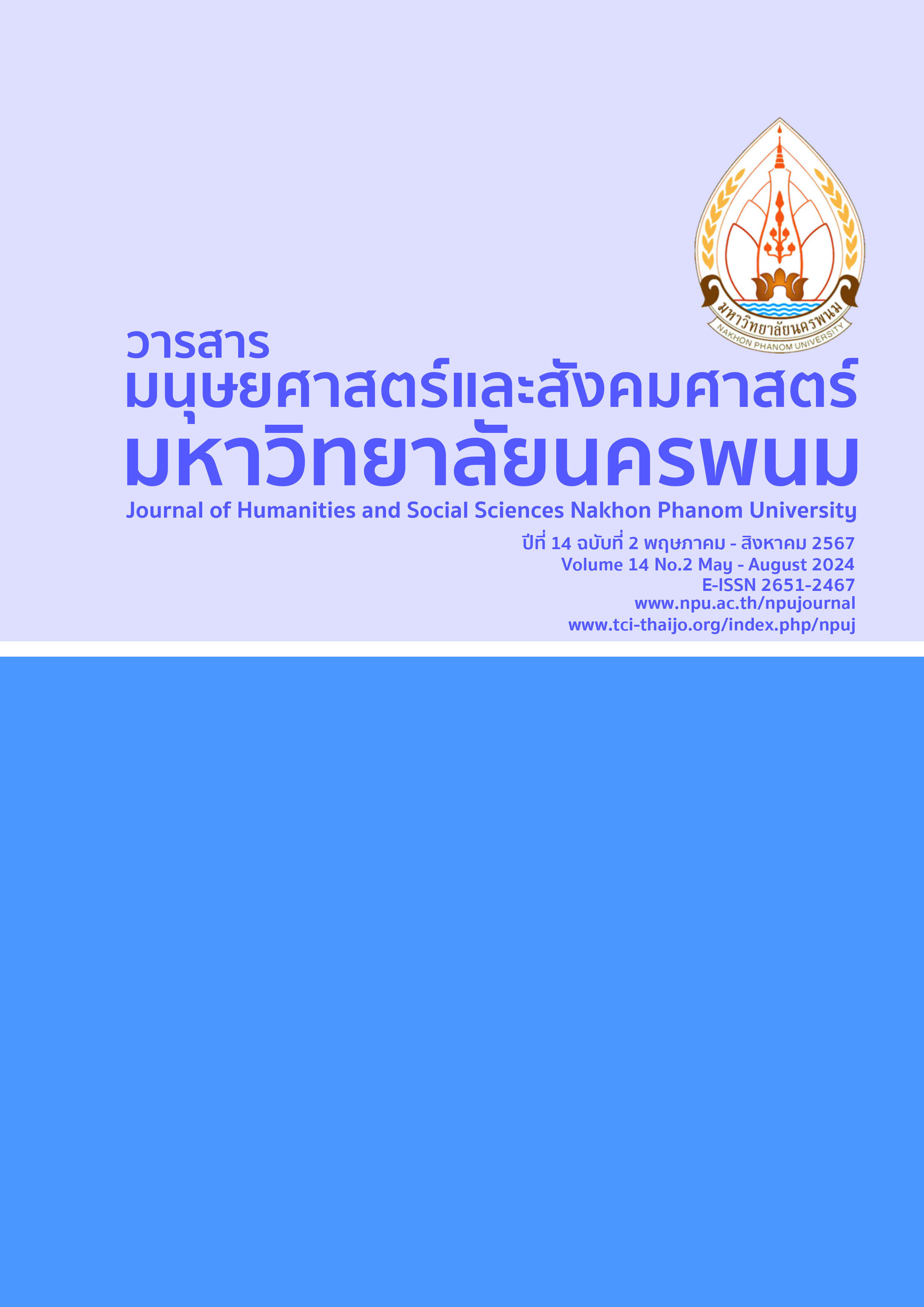ปัจจัยเชิงสาเหตุที่มีอิทธิพลต่อการรักษาสมาชิกภาพกับองค์กรของพนักงานขายส่วนหน้าร้าน ของกลุ่มธุรกิจร้านสะดวกซื้อในเขตกรุงเทพมหานคร
Main Article Content
บทคัดย่อ
การวิจัยนี้มีวัตถุประสงค์เพื่อตรวจสอบความสอดคล้องของโมเดลและศึกษาความสัมพันธ์โครงสร้างเชิงสาเหตุของปัจจัยที่เกี่ยวข้องกับการรักษาสมาชิกภาพกับองค์กรของพนักงานขายส่วนหน้าร้านของกลุ่มธุรกิจร้านสะดวกซื้อในเขตกรุงเทพมหานคร กลุ่มตัวอย่าง คือ พนักงานขายส่วนหน้าร้านของกลุ่มธุรกิจร้านสะดวกซื้อในเขตกรุงเทพมหานคร จำนวน 430 คน เครื่องมือที่ใช้รวบรวมข้อมูลเป็นแบบวัดมาตราส่วนประมาณค่า 5 ระดับ ซึ่งวิเคราะห์โมเดลสมการโครงสร้างเชิงสาเหตุ ผลการวิจัย พบว่า 1) โมเดลความสัมพันธ์เชิงสาเหตุมีอิทธิพลต่อการรักษาสมาชิกภาพกับองค์กร ซึ่งมีความสอดคล้องเชิงประจักษ์ พิจารณาได้จากสถิติที่ใช้ในการตรวจสอบผ่านตามเกณฑ์ ดังนี้ ค่าค่าไค-สแควร์ (c2) เท่ากับ 131.62 ค่าองศาอิสระ (degrees of freedom: df) เท่ากับ 107 ค่า p-value เท่ากับ 0.05 ค่าดัชนี CFI เท่ากับ 1.00 ค่าดัชนี GFI เท่ากับ 0.97 ค่าดัชนี AGFI เท่ากับ 0.95 ค่า RMSEA เท่ากับ 0.02 และ ค่า RMR เท่ากับ 0.03 2) ความสัมพันธ์ระหว่างตัวแปรภาวะผู้นำเชิงนวัตกรรม กับ การรักษาสมาชิกภาพกับองค์กร พบว่า ขนาดความสัมพันธ์ 0.71 แยกเป็นอิทธิพลทางตรง 0.13 และอิทธิพลทางอ้อม 0.34 เป็นอิทธิพลรวม 0.51 โดยที่อิทธิพลทางอ้อม และอิทธิพลรวม ส่งผลต่อการรักษาสมาชิกภาพกับองค์กร อย่างมีนัยสำคัญทางสถิติ และภาวะผู้นำเชิงนวัตกรรมมีอิทธิทางตรงต่อความผูกพันของพนักงาน และมีอิทธิทางอ้อมต่อการรักษาสมาชิกภาพกับองค์กร อย่างมีนัยสำคัญทางสถิติที่ระดับ .05
Article Details

This work is licensed under a Creative Commons Attribution-NonCommercial-NoDerivatives 4.0 International License.
References
Avolio, B. J., Bass, B. M. & Jung, D. I. (1999). Re-examining the components of transformational and transactional leadership using the Multifactor Leadership Questionnaire. Journal of Occupational and Organizational Psychology, 72(4),441-462. https://doi.org/10.1348/096317999166789
Bagheri, A. & Harrison, C. (2020). Entrepreneurial leadership measurement: a multi-dimensional construct. Journal of Small Business and Enterprise Development, 27(4),659-679. doi:10.1108/JSBED-01-2019-0027
Bass, B., M. (1985). Leadership and performance beyond expectations. New York : Free Press.
Bupphachuen, A. (2020). Leadership for Innovation: Drives Your Organization towards Excellent. Journal of Educational Innovation and Research, 4(3),205-216.
Comrey, A. (1973). A First Course in Factor Analysis. London : Academic Press
Cronbach. (1970). The evolution of research. New York : Harper Collins.
Dumdum, U. R., Lowe, K. & Avolio, B. (2013). A Meta-Analysis of Transformational and Transactional Leadership Correlates of Effectiveness and Satisfaction: An Update and Extension. USA : Binghamton University
Herzberg, F., Mausner, B. & Syndermn, B. B. (1959). The motivation to work. (2nd ed). New York : Wiley & Son.
Hewitt, A. (2015). Aon Hewitt’s Model of Employee Engagement. n.p. : Aon.
Horth, D.M. (2014). Innovation Leadership How to use innovation to lead effectively, work collaboratively, and drive results. Greensborough, NC: Center for Creative Leadership.
Kline, R. B. (2005). Principles and Practice of Structural Equation Modeling. (2nd ed). New York : Guilford Press.
LH BANK. (2023) Economic analysis Industry Outlook 2023 : Convenience Stores. Retrieved December 2023, from https://www.lhbank.co.th/getattachment/b80c1587-2f11-4711-b780-1a05ac41f1e0/economic-analysis-Industry-Outlook-2023-Convenience-Stores
Mathis, R. L. & Jackson, J. H. (2006). Human Resource Management. USA : Thomson/South-Western.
Namwong, J. (2020). Developing a Program to Strengthen Innovative Leadership of School Administrators under the Jurisdiction of Sisaket Primary Educational Service Area Office Region 1 (Unpublished Master’s Thesis). Mahasarakham University, Mahasarakham, Thailand.
Pochjanart, P. & Chienwattanasook, K. (2020). Innovative Leadership for the Competitive Advantage of the Organizationin the 21st Century. Journal of Management Science Review, 22(1),241-257.
Poojanjob, R. (2023). The influence of Organization Commitment On intention to stay on the jo
b: Empirical Evidence of Professional Nurses, Hat Yai District, Songkhla Province. Journal of Roi Kaensarn Academi, 8(9),74-88.
Rakjul, P. (2020). The Influence of Transformational Leadership and Employees Engagement on Intention to Stay of Employees for The Convenience Store in Thailand (Unpublished Doctoral Dissertation). Maejo University, Chiang Mai, Thailand.
Schumacker, R.E. & Lomax, R.G. (2004). A Beginner’s Guide to Structural Equation Modeling. (2nd ed). Mahwah, NJ : Lawrence Erlbaum Associates
Someran, L., Supaphol, S. & Thanyajaroen, K. (2020). Strategic Resource Management Building Organizationnal Commitment of The Employees at Sermsuk Public Limited Company, Autong District. Journal of MCU Social Science Review, 22(1),216-273.
Steers, R. M. (1991). Introduction to Organizational Behavior. (4th ed.). New York : HarperCollins.
Tangsukijjakron, N. (2020). Influence of Transformational Leadership and Organizational Commitment that Affects Innovative Work Behavior of The Employees Airport of Thailand Public Company Limited. (Unpublished Master’s Thesis). Srinakharinwirot University, Bangkok, Thailand.
Tunpaiboon, N. (2022). Trend Business/Industry for 2023-2025: Modern Trade Business. Retrieved December 2023, from https://www.krungsri.com/th/research/industry/industry-outlook/wholesale-retail/ modern-trade/io/modern-trade-2022
Wissanukorn, T. (2020). The Contingency Leadership Affecting The Effectiveness of Personnel Administration of Primary Schools Under Suratthani Primary Educational Service Area Office 3 (Unpublished Master’s Thesis). Suratthani Rajabhat University, Suratthani, Thailand.
Yota, W., Chanawongse, K., Sota, C., Chanawongse, A. & Chaiboonruang, S. (2021). Leadership Innovation with Disruption World. College of Asian Scholars Journal, 11(3),11-18.
Yukl, G. A. (1981). Leadership in Organizations. London : Prentice-Hall.

